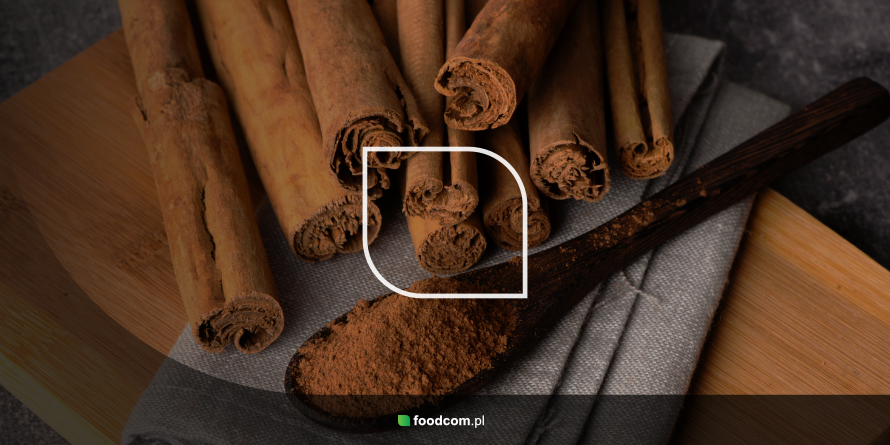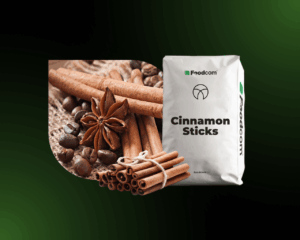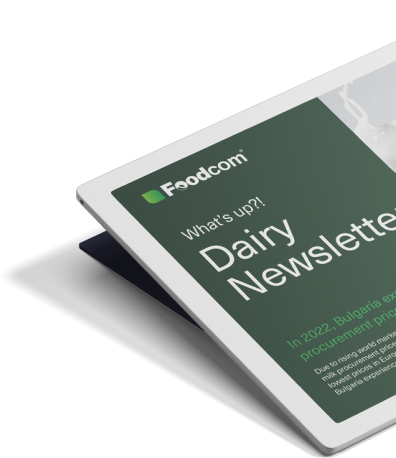- Cinnamon is a valued raw material with health-promoting properties and a rich aromatic profile, used in various industries.
- Ceylon cinnamon stands out from other varieties due to its higher quality and lower content of coumarin, which is harmful in excess.
- In the food industry, cinnamon is used as a spice, flavoring, functional ingredient, and natural preservative.
- Growing demand for natural products is driving the dynamic development of cinnamon use in the food, cosmetics, and pharmaceutical industries.
For centuries, cinnamon has been recognised as a spice valued worldwide – once a luxury commodity, today it is a cornerstone of the food and culinary industry. Its distinctive flavour, natural origin and wide-ranging health-promoting effects make it a raw material of ever-growing business importance. The following article provides key information on the properties, types and uses of cinnamon.
What is cinnamon? Types and origin of the raw material
Cinnamon is a spice extracted from the dried bark of trees of the genus Cinnamomum (cinnamon tree). Historically, it originated in the Ceylon area (present-day Sri Lanka), where the species considered the most noble originated – Cinnamomum verum, or Ceylon cinnamon.
Commercially, we encounter two main types of raw material: Ceylon cinnamon and fragrant cinnamon (cassia or cassia). It is the former that is considered the most prized and referred to as ‘true cinnamon’. It has a delicate, slightly sweet aroma and contains minimal amounts of coumarin – a substance whose excessive consumption can stress the liver. It is usually found in high-end and premium products. Cassia cinnamon, on the other hand, is often found in the mass market. It has a more intense flavour and contains higher amounts of coumarin.
Cinnamon comes to the market in the form of sticks, pure powder, extracts, oils and food flavourings. Wholesale cinnamon is distributed to factories, bakeries, beverage manufacturers, confectioners, nutritional supplements, flavourings, functional foods and the catering industry.
Properties of cinnamon – active ingredients and health profile
Cinnamon sticks are characterised by their wealth of natural biologically active compounds. Among the most important are:
- cinnamaldehyde – responsible for the aroma and antimicrobial properties of cinnamon (the raw material is also available as an extract),
- eugenol,
- polyphenols (including flavonoids, phenolic acids, e.g. cinnamic acid),
- essential oils,
- terpenes,
Many people have doubts about cinnamon – is it healthy? In small amounts, yes. High in antioxidants, cinnamon shows strong nutritional, anti-inflammatory and protective properties.
Medicinal properties
Studies confirm that cinnamon:
- has antibacterial properties (in the past it was also used as an ingredient in medicines, e.g. for the plague);
- has anti-inflammatory effects (due to the presence of polyphenols);
- has anti-cancer effects (related to inhibition of oxidative stress and pro-inflammatory compounds);
- may help lower blood sugar (by increasing insulin sensitivity and slowing gastric emptying);
- supports the cardiovascular system (lowers cholesterol and triglycerides).
Cinnamon is valued both in the functional food sector and in the food industry, where health values are a key element in building competitive advantage.
Supporting diet, weight loss and speeding up metabolism
Cinnamon can also be used for weight loss and to support a healthy diet. The raw material supports metabolism on several levels:
- increases metabolic thermogenesis,
- stabilises glucose levels, minimising hunger attacks,
- improves digestion,
- reduces the absorption of certain fats.
It is used in weight loss and diet products as a natural flavour and aroma enhancer and functional ingredient.
Use in cooking and recipes
Cinnamon is characterised by its versatile culinary use. In the kitchen, it is used both as ground cinnamon and in the form of sticks, oil or aromatic extracts.
It most often appears in:
- baked goods (yeast cakes, pastries, cakes, apple pie),
- middle Eastern and Asian dishes,
- fruit preparations,
- biscuits and muesli,
- coffees, teas, chocolates,
- alcoholic and non-alcoholic beverages (mulled wine, punch, teas),
- marinades and meat dishes (e.g. stews, mutton, ham).
Cinnamon sticks can be used to flavour food for a long time, while ground cinnamon is used as a direct spice or as an ingredient in spice mixtures.
Uses of cinnamon in the food industry
Cinnamon for industry is used primarily in the production of foodstuffs:
- sweets and baked goods,
- beverages,
- the production of candy bars and functional foods,
- spice mixtures,
- yoghurts and dairy desserts,
- cereal products.
In addition to its role as a flavour, cinnamon also acts as a natural preservative. It is also valued for its high stability in thermal processes and attractive raw material cost in relation to the sensory effect.
Differences between Ceylon cinnamon and cassia
Ceylon cinnamon is considered to be more highly valued and safer. It has a lower coumarin content (less than 0.004%), compared to up to 1% for cassia cinnamon. According to EFSA, the daily dose of coumarin safe for humans is 0.1 mg per kg of body weight per day. A higher dose may have a negative effect on the liver and kidneys. The levels of coumarin allowed by the European Parliament Regulation in products vary between 5 and 50 mg/kg.
Varieties can be distinguished by the colour and appearance of the sticks – the scented cinnamon stick twists on one side, the Ceylon cinnamon stick twists on both sides. The bark of Ceylon cinnamon is light yellow-brown in colour and easily ground, while that of cassia cinnamon is harder and darker, rust-coloured or reddish. Ceylon cinnamon has a milder flavour, while cassia has a more intense, often astringent taste.
Ceylon cinnamon is desirable in premium products such as dietary supplements and health foods, while the cassia variety is more commonly used in mass production. In the food industry, the choice of cinnamon type depends on the product’s price segment, safety requirements, target country and brand strategy.
Cinnamon in other industries: cosmetics, pharmaceuticals, feeds
Cinnamon is a versatile raw material that is also used outside the food sector. Its natural origin as a plant product makes it desirable in particular in ‘clean label’, bio and eco articles, where it is an alternative to synthetic additives.
In cosmetics, cinnamon is found in: bath gels and lotions, warming lotions, anti-acne preparations or perfumes and essential oils. In this context, it is valued not only for its aroma, but also for its antibacterial and circulation-stimulating effects.
In pharmacy, cinnamon extracts can be an ingredient in syrups and flavouring solutions, as well as mouthwashes. What does it help with? It is a natural antioxidant and helps fight infections.
How can cinnamon be used in the feed industry? It can be used as an ingredient to support the digestive health of animals, a raw material with antimicrobial properties and a natural flavouring to improve the palatability of feed.
Cinnamon producers
The largest cinnamon producers in the world are:
- Sri Lanka – the dominant producer of Ceylon cinnamon;
- China – the largest exporter of cassia cinnamon;
- Indonesia – a significant share of the cassia market;
- Vietnam – growing share, especially in the processed extracts segment;
- India – production for local and export markets;
- other countries: Madagascar, Seychelles, Dominica, Grenada.
For B2B companies, stable access to raw material, quality parameters, control of coumarin content and flexibility of cinnamon form are important. All these conditions are met by the products available through Foodcom. Looking for a trusted partner? Check out Foodcom S.A.










